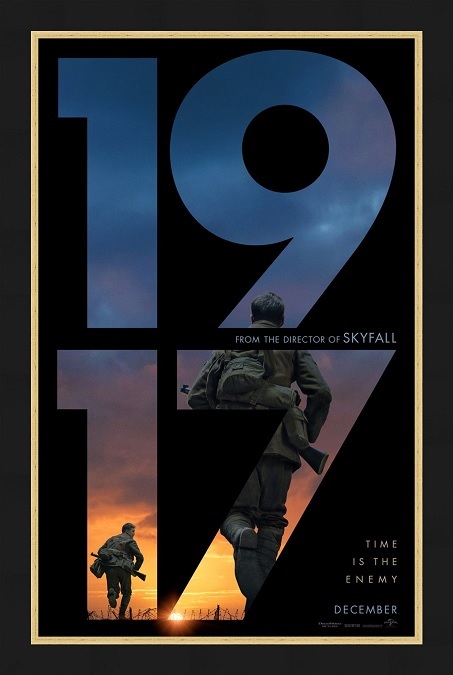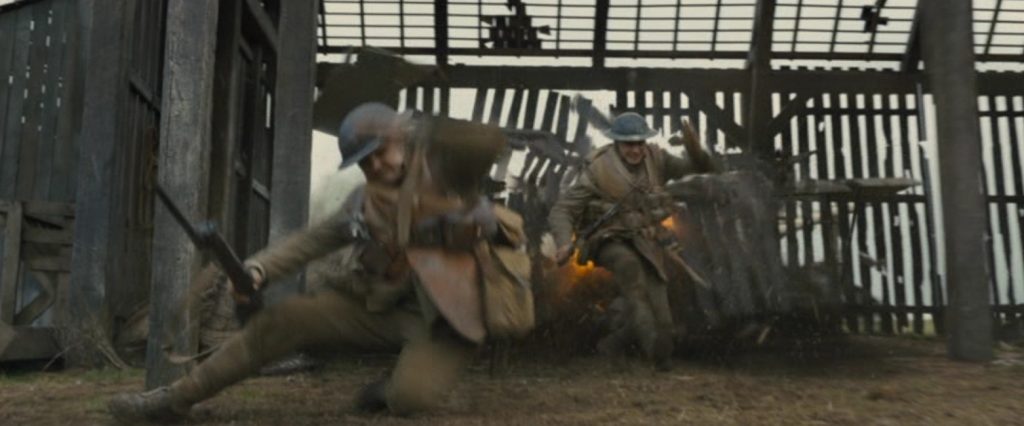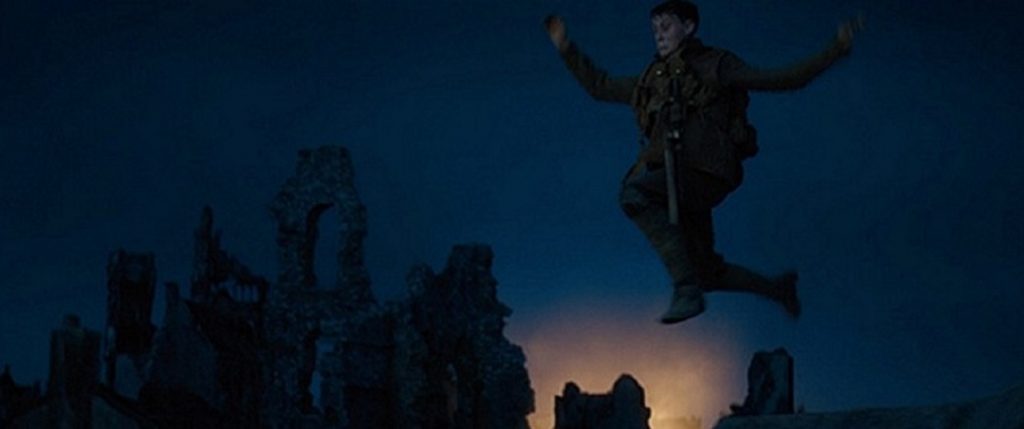



1917 – 2019 (WINNER)

The visual effects for this movie, hands down, deserved the Oscar they took home. They showed audiences something that had never been seen before. This was innovative and gripping story telling at its best. Director Sam Mendes had a vision of a film experience unlike anything that had ever been attempted, and he achieved that vision in a remarkable way.
So this is a war film, and as such, it had its fair share of battle sequences, bloody death, and explosions, offering up a respectful amount of the horrors of war. But what this movie did that was so remarkable was the fact that there was only one place in the film where there was a cut, a transition. The entire film is made up of two continuous takes, each lasting around an hour. The characters had to undertake a journey that crossed great spans of distance and time, and wherever they walked, the camera simply followed them, shooting them from different and unique angles, swinging around them, rotating from back to front, but never cutting. It made for a fascinating and immersive visual experience.
Now clearly, this could only be done through the magic of visual effects. It would be impossible to do this entire film in only two takes. The visual effects teams had to find innovative and believable ways to seamlessly blend the separate cuts in such a way as to make them completely invisible. To achieve this feat, this was the first film in which a specialized camera was used, called an Arri Alexa Mini LF Digital cinema camera. This was critical, as it allowed the filmmakers to keep the camera in constant motion, sometimes being passed from cranes and wires, to being hand-held by a camera operator, and back again. I’m guessing there were few or no stationary or fixed camera shots in the entire film.
The camera angles and movements had to be meticulously planned out and executed with a certain amount of precision. This allowed the effects artists to stitch together the different cuts. One of the film’s visual effects supervisors, Guillaume Rocheron, was quoted as saying in an interview with Computer Graphics World, or CGW, “Some of the stitches are simple, where a natural piece of landscape or architecture was used to disguise and blend the transition. Others were extremely complicated, where we switched to a digital set with digital actors because it was the only solution that would give us the exact throw of the camera, and as a viewer, you would not question it.”
There are several scenes that stand out to me as really amazing. There was the scene where two soldiers are nearly killed by a bomb in a bunker, another where an airplane crashes to the ground. After one of them dies, the remaining soldier escapes a bombed out city by jumping off a bridge into a river. And finally there is the scene where he sprints across a battlefield amid exploding shells and charging men. This amazing film somehow blurred the line between a simple entertainment and a work of art. I’ll say it again. This film really deserved its Oscar win.